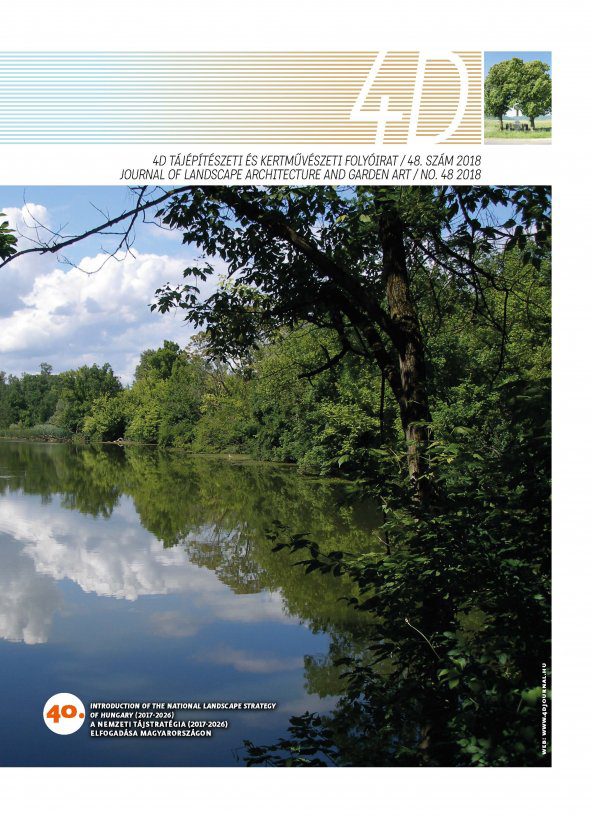The layers of the main street
Keywords:
Main Street, urban layers, urban sociology, small town, development of the settlemensAbstract
The subject of the paper is one of the most significant element of urban morphology – the street. Researching its identity, essence and morphology of small towns in the Great Plain makes the framework of the study.
The research is based on the hypothesis that “the main street is the essence of the town”. It is not only the towns’ cultural imprint, but its soul, the concentration of central functions, shops and most of the hospitality can be found here.
Owing to the complexity of this linear urban element, a few layers are defined that are presenting the structure, development, changes in the history and everyday life of the settlement.
Furthermore, these layers enable to depict the fine methodological differences how the people perceive their surroundings.
Defining the model that define certain characteristics of the Main Streets that make the readability possible is the fulcrum of this paper, which will contain characteristic examples, taken from the Ph.D. in progress of the author.
References
Jane Jacobs (2008): Mire való a járda? A biztonság, Kommentár, Várospolitika, 2008/2, p.:4
Steven Johnson: Emergencia: A hangyák, az agy, a városok és a szoftverek életéről és viszonyairól, Világosség 2003/3-4, p.:31
Meggyesi Tamás (2006): Városépítészet, Egyetemi jegyzet, Budapest, p.:30
Kőszegfalvi György and Loydl Tamás (2001): Településfejlesztés, ELTE Eötvös kiadó, Budapest, p.: 20-29
Tausz Katalin (1982): A magyar településhálózat társadalmi rajza, Népművelési és Propaganda Iroda, Budapest In: Szabó Imre: Magyarország településszerkezetének rövid története (www.sze.hu)
Kahn, Louis (1971): The Room, the Street and Human Agreenment, A+U, (ttps://www.japlusu.com/news/room-str- eet-and-human-agreement), 2012
Gehl, Jan (2006): Life between buildings,The Danish Architectural Press, p.: 13
S. Anderson (1986): On Street, The MIT Press, Cambridge, p.:15
Gehl, Jan (2010): Élhető városok, TERC, Budapest, p.: 9-18
Rossi, Aldo (2008): Arhitekura grada (A város építészete – szerb kiadás), Gradjevinska Knjiga, Beograd, p.:95
Tschumi, Bernard (1987): Cinégramme folie: le Parc de la Villette, Princeton Arch. Press, p.:32
Derrida, Jacques (1991): Grammatológia, Magyar Műhely/ÉLETÜNK, Buda- pest, p.:62
Meggyesi Tamás (2009): Városépí- tészeti alaktan, TERC kiadó, Budapest, p.: 24
Hamvas Béla (1988): Az öt géniusz, Életünk könyvek, Szombathely
Kókai Sándor (1999): Az Alföld von- záspontjai és – körzetei a XIX. század közepén, Nyíregyháza, p.:15
Nagy Béla (2005): A település, az épí- tett világ, B+V Lap- és Könyvkiadó, p.:72 26 Somfai Attila (2002): Kisalföldi és alföldi mezővárosok különbözősége, kis- városi értékek védelme, Tér és társadalom
Harkai Imre, Balassa Iván (1991): A Magyar Népi Építészeti Archívum kiad- ványai, A Vajdaság népi építészete, Szentendre, p.:11-15
Norberg-Schulz, Christian (2006): Existence, Space and Architecture, GP “Buducnost” – Zrenjanin, Nagybecskerek, (szerb kiadás),p.:18
Ferge, Zsuzsa (1969): Társadalmunk rétegződése, Budapest (www.tankony- vtar.hu)
Kolosi Tamás (1987): Tagolt társadalom, Gondolat, Budapest (www.tankony- vtar.hu)
Nagy Béla (2005): A település, az épített világ, B+V Lap- és Könyvkiadó
Lynch, Kevin (1960): The Image of the City, MIT Press, London
Cullen, Gordon (1971): The Concise Townscape, The Architectural Press, Oxford,
http://nepesseg.population.city/magyarorszag/ dunaujvaros/#1
Downloads
Published
Issue
Section
License
Copyright (c) 2024 Anna Pecze

This work is licensed under a Creative Commons Attribution-NonCommercial-NoDerivatives 4.0 International License.
A folyóirat Open Access (Gold). Cikkeire a Creative Commons 4.0 standard licenc alábbi típusa vonatkozik: CC-BY-NC-ND-4.0. Ennek értelmében a mű szabadon másolható, terjeszthető, bemutatható és előadható, azonban nem használható fel kereskedelmi célokra (NC), továbbá nem módosítható és nem készíthető belőle átdolgozás, származékos mű (ND). A licenc alapján a szerző vagy a jogosult által meghatározott módon fel kell tüntetni a szerző nevét és a szerzői mű címét (BY).



